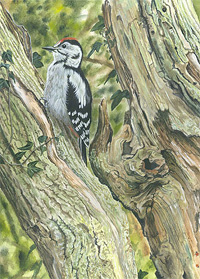Sunday, 22 April 2018
Bee-flies and spring
As soon as the "Lollipop Primroses" (Primula Denticulata) start to flower and we get some warm sunny days, I start listening out for a high pitched whine in the garden and looking out for quickly darting and hovering golden furry flies. For me it means spring is definitely underway when the Bee Flies are back in the garden. For a start they apparently don't feel inclined to fly if the temperature is below 17 degrees c. so sunny days are a must for them. All that hovering and zooming about must require a lot of energy. It also means that the solitary bees whose nests and larvae they parasitize have had time to get their breeding cycles underway. The adult beeflies have a really long proboscis that sticks out from their face to reach deep into flowers for nectar. It looks like it could do you an injury if it decided to, but beeflies are totally harmless, to us at least.
Female beeflies look out for solitary bee nests and when they find one they hover outside the entrance and flick their egg in. Sometimes they collect dust or sand on the tip of their abdomens and coat the eggs with this perhaps to disguise them or add a bit of weight to get them deeper into the nests.When her larva hatches, its a skinny little thing that crawls in and feeds on the provisions the solitary bee has laid in for her own offspring. Eventually it changes into a larger, fatter grub that attaches itself to the solitary bees larva and sucks it dry - and then moves on to the next one as there are usually several to be had in one burrow. Sounds awful but beeflies don't seem to make a dent in the solitary bee populations and to be honest they are one of many insects that prey on them. Lifes rich tapestry I guess, and I love them all.
Female beeflies look out for solitary bee nests and when they find one they hover outside the entrance and flick their egg in. Sometimes they collect dust or sand on the tip of their abdomens and coat the eggs with this perhaps to disguise them or add a bit of weight to get them deeper into the nests.When her larva hatches, its a skinny little thing that crawls in and feeds on the provisions the solitary bee has laid in for her own offspring. Eventually it changes into a larger, fatter grub that attaches itself to the solitary bees larva and sucks it dry - and then moves on to the next one as there are usually several to be had in one burrow. Sounds awful but beeflies don't seem to make a dent in the solitary bee populations and to be honest they are one of many insects that prey on them. Lifes rich tapestry I guess, and I love them all.
Subscribe to:
Post Comments (Atom)



No comments:
Post a Comment